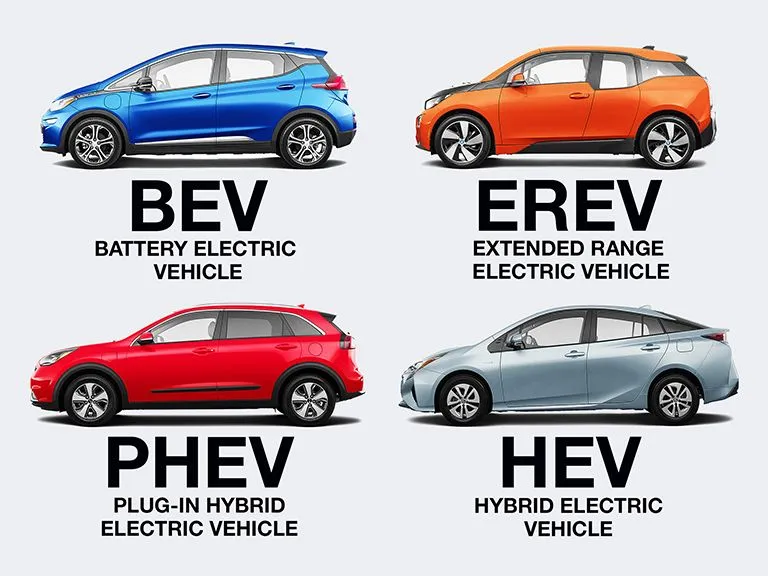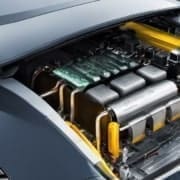Understanding Battery Electric Vehicle Components
Understanding Battery Electric Vehicle Components
As the global community grapples with environmental issues and the urgent need for sustainable solutions, battery electric vehicles (EVs) have emerged as a promising avenue towards a cleaner, greener future. From the heart of this revolutionary technology, the battery, to the supporting systems that enable these vehicles to serve our transportation needs, each component plays a crucial role in propelling us towards a more sustainable future. This exploration will delve into the inner workings of EVs, elucidating the structure of electric vehicle batteries, the potency of power electronics and the electric motor, and the indispensable role of the charging system and infrastructure.
Structure of Electric Vehicle Batteries
Components of Electric Vehicle Batteries
One of the central elements of an electric vehicle (EV) is its battery system. The energy storage system, i.e., the battery, not only provides energy needed to move the vehicle but also powers all other electronics within the car.
Battery Cells
The building block of any EV battery is the cell. While they might look similar to regular AA batteries that are used in smaller electronics, EV cells contain materials that allow them to store and discharge much more energy. Within the cells, there are four main components: the cathode (positive terminal), the anode (negative terminal), a separator, and an electrolyte.
Modules and Packs
Many cells are grouped together to form a module. The number of cells in a module can vary greatly depending on the specific design of the battery pack and the vehicle itself. Modules are then combined to create the battery pack. Battery packs in EVs are not only large in size but also quite hefty, often weighing several hundred kilograms.
Different automotive manufacturers take different approaches to design and assemble this battery-pack structure, aiming to balance the vehicle’s overall weight distribution, cost, range, and thermal management.
Cooling Systems
Electric vehicle batteries generate heat during operation, particularly during rapid charging or discharging. To prevent overheating and maintain optimal performance and longevity, EV batteries require cooling systems. There are several types of cooling systems used, including air-cooling, liquid-cooling, and phase-change material. The choice depends on factors like the battery’s capacity, power requirements, and the vehicle’s design.
In an air-cooling system, air is circulated around the battery modules to dissipance heat. With liquid cooling, coolant is circulated around or through the battery pack to absorb and redistribute heat. Phase-change material, on the other hand, absorbs heat as it changes state from solid to liquid or vice versa.
Chemical Process in EV Batteries
When an electric vehicle battery is being used to power the vehicle (discharging), lithium ions move from the positive electrode (cathode) through the electrolyte to the negative electrode (anode). During this process, electrons are forced to travel around a circuit outside the battery, creating an electric current that can be used to power the vehicle’s electric motor.
During charging, the process is reversed. Lithium ions move from the anode to the cathode, and an external power source supplies the electrons back into the battery.
Diving into the Structures of EV Batteries
The intricate structure of an electric vehicle battery warrants a deep dive if we wish to make strides towards a society heavily reliant on electric mobility. This foundational understanding will not only assist in problem-solving but also in refining the design and upkeep of electric vehicles. The battery’s structure, together with its internal chemical reactions, is the bedrock of the sophisticated technology employed in contemporary electric vehicles.

Power Electronics and Electric Motor
The Role of Power Electronics in Battery Electric Vehicles
Within a battery electric vehicle (BEV), the orchestration of electrical flow from the battery to the electric motor is facilitated by essential power electronics. These components serve as the pivotal link, transforming the direct current (DC) energy stored in the battery into alternating current (AC) energy. This AC energy is then channeled directly to power the electric motor, propelling the vehicle forward in an efficient manner.
Role in Regenerative Braking
Equally important is the role power electronics play in regenerative braking, a key feature in many BEVs. This process involves the conversion of kinetic energy (created when the vehicle is slowing down or in motion) back into electrical energy, which is stored back into the battery for future use. When the driver applies the brakes, the electric motor works in reverse and acts as a generator, charging the battery within the vehicle. The power electronics oversees this conversion and transfer, ensuring optimal energy recovery during deceleration.
Electric Motor Function and Operation
The electric motor’s role in a BEV revolves around converting electrical energy into mechanical energy to propel the vehicle. Unlike internal combustion engines that burn fuel, electric motors generate rotational force or torque through the interaction of magnetic fields. When electricity from the battery passes through the motor, it creates a magnetic field that turns the rotor, creating the necessary torque to drive the vehicle’s wheels.
The precise control of the electric motor is another essential aspect. The motor controller, which is part of the power electronics system, regulates the motor’s speed, torque, and direction. Hence, the performance of a BEV can be accurately managed and adjusted.
Understanding BEVs: Power Electronics and Electric Motor Components
The fundamental components of Battery Electric Vehicles (BEVs), power electronics and electric motors, work in unison to create a sustainable mode of transport. The role of power electronics in BEVs is to control and manage electrical flow, achieve efficient energy conversion, as well as manage power during the regenerative braking process. On the other hand, the electric motor specializes in transforming electrical energy into kinetic energy which propels the vehicle, marking the importance of both components in generating environmentally friendly, efficient driving experiences.

Charging System and Infrastructure
The Charging Systems Powering Battery Electric Vehicles
Battery Electric Vehicles, often referred to as pure electric vehicles, rely solely on electrical power derived from sizable rechargeable batteries built into the car. The power to push the wheels is generated from high-voltage electric motors, while these batteries are kept charged through an external charging system.
The charging units for BEVs have a broad range. The most prevalent type being Level 1 charging, consumes power from a standard 120-volt residential outlet. But the trade-off of this accessible form of charging is a lengthened time frame, as a full recharge can take several hours.
Progressing to Level 2 charging, the voltage jumps to 240 or 208, on par with high-capacity appliances such as stoves or clothes dryers. This type speeds up the charging process significantly, though it entails having a designated charging station or specific wiring setups.
Topping the list is Fast charging or Level 3, which uses Direct Current (DC), a shift from the Alternating Current (AC) utilized by Level 1 and 2. DC Fast Charging outlets, commonly located along highways or commercial locations, can power a vehicle to 80% of its total capacity in approximately 20 minutes. Although, frequent usage of this high-speed charging method could potentially reduce the longevity of the vehicle’s battery.
Electric Charging Infrastructure
The charging infrastructure—the systems and networks in place to recharge electric vehicles—varies widely worldwide. In some regions such as Norway and the Netherlands, charging stations are abundant and the electric grid is reliable, making EV ownership easier. In contrast, many parts of the United States and other countries still lack extensive charging infrastructure.
Numerous companies and governmental entities worldwide have acknowledged the importance of charging infrastructure and are investing heavily in its development. Tesla, for instance, has built a worldwide network of Supercharger stations. Similarly, utilities and governments are constructing more charging stations in cities and along major highways.
Future Trends In Electric Vehicle Charging
In terms of future trends, wireless charging is a promising technology. With this method, a charging pad could be installed in a garage or parking spot, and an EV would recharge simply by parking over it—eliminating the need to plug in. Various companies are testing and improving this technology, and it’s already available on a limited basis in some places.
Battery swapping is another future trend to watch. Instead of charging a depleted battery, an electric vehicle would swap it for a fully-charged one at a swapping station. This method offers the potential for quick “refueling,” similar to traditional gas stations. However, this system would require standardization of battery sizes and types across different vehicle makes and models—a significant challenge.
In conclusion, the charging systems and infrastructure for battery electric vehicles are evolving rapidly. As technology and infrastructure continue to improve, owning and operating electric vehicles will become progressively easier and more convenient. Technologies like fast charging, wireless charging, and battery swapping are poised to revolutionize how we power our cars—and all of that makes EVs more attractive for consumers. These developments lead us to an exciting future for electric vehicles.

As our understanding of electric vehicles deepens, it becomes clear why they are forging the path towards a more sustainable future. Delving into the intricate structure of EV batteries, the role of power electronics and electric motors, and the importance of charging systems and infrastructure provides us with a glimpse into the transformative potential these vehicles hold. As technological advancements continue to push the boundaries of what is possible, we can expect to see remarkable improvements in battery efficiency, power electronics, and charging infrastructure. This technological evolution promises to make electric vehicles an even more attractive, sustainable alternative to traditional internal combustion vehicles, thereby aiding global efforts to reduce greenhouse gas emissions and combat climate change.






